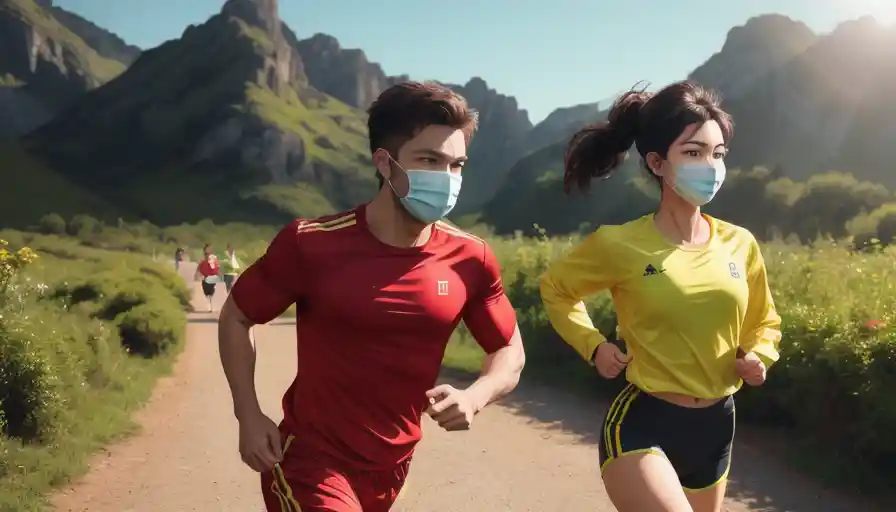Essential Tips for Exercising Safely While Wearing a Face Mask
Learn essential guidelines and practical tips for wearing face masks safely during exercise to keep you and others healthy.
Posted by
Related reading
Navigating Food Challenges at Work: Tips for a Healthier Office
Explore effective strategies to overcome common food challenges in the workplace and maintain a healthy lifestyle throughout your workday.
Addressing Childhood Obesity: Practical Tips for Families
Explore effective strategies for combating childhood obesity and promoting healthy habits within families.
Transitioning to Weight Maintenance: Your Essential Guide
Learn how to successfully transition from weight loss to weight maintenance with practical tips and strategies tailored for your journey.
Understanding the Impact of Alcohol on Abdominal Fat and How to Manage It
Explore the connection between alcohol consumption and abdominal fat, along with practical tips for moderation and healthier snacking options to maintain a balanced diet.
Understanding Carb Cycling: Benefits, Risks, and Sample Menus
Explore the concept of carb cycling, its potential benefits, risks, and sample meal plans to see if this trend fits your wellness journey.

The Importance of Wearing Masks While Exercising
As public health guidelines have emphasized the need for face coverings to prevent the spread of the novel coronavirus, many states in the U.S. have made mask-wearing mandatory. Some states require masks only indoors, while others extend the requirement to outdoor spaces when maintaining social distance is not possible. The Centers for Disease Control and Prevention (CDC) advocates for wearing face coverings in public, especially when interacting with individuals outside your household, and stresses the importance of social distancing.
This is particularly vital for those engaged in physical activities. As noted by experts, like personal trainers and nutrition specialists, intense exercise can lead to more forceful breathing, which may contribute to the spread of respiratory droplets. Research indicates that the distance of six feet may not be sufficient for individuals exercising near each other without masks. As such, following local public health guidelines when exercising, whether at a gym or during outdoor activities, is crucial.
Here are some essential tips to help you stay safe while wearing a mask during your workouts:
DO: Embrace the Discomfort
Initially, it’s important to acknowledge that wearing a mask can be uncomfortable, particularly during physical exertion. Adaptation may take a little time, but the minimal discomfort is far preferable to the risks of contracting or spreading COVID-19. Experts agree that adjusting to mask-wearing is a small price to pay for the greater good of protecting others.
According to the American Lung Association, neither surgical nor cloth masks hinder the quality of air entering your lungs. While mask-wearing may cause a feeling of restricted airflow, your body will adapt, and it will become less burdensome as you get used to it. Start gradually: consider beginning your routine with lighter activities like walking or stretching before moving to more intense workouts like high-intensity interval training or cardio.
DON’T: Ignore Existing Health Conditions
If you have underlying health conditions—such as cardiovascular issues, respiratory illnesses, or asthma—consult with your healthcare provider before exercising while masked. Adjusting your activities accordingly to a mask-free environment, away from others, may be necessary to ensure your safety.
DO: Choose the Right Mask
It’s vital to select an appropriate mask based on the type of exercise you plan to do. Public health experts recommend looking for masks made from two or more layers of breathable, washable fabric (like cotton). Avoid non-breathable materials or masks designed with vents, as these do not provide the necessary protection.
DO: Wear Your Mask Correctly
A mask must be properly worn over both your nose and mouth for it to be effective. A mask that slips down or rests under your nose won’t fulfill its purpose. The CDC recommends that your mask fit snugly against your face, with no gaps, to ensure the best protection.
DON’T: Place Your Mask on Surfaces
When you need to remove your mask briefly—for instance, to drink water—avoid placing it on surfaces. Virus particles can remain viable on surfaces for extended periods, making it crucial to store your mask in your hand or pocket. For those especially concerned, carrying a resealable bag can be a practical solution.
DO: Clean Your Mask After Every Use
The CDC advises washing cloth face masks after each use, and this includes workouts. Just like you wash your workout gear, your mask needs regular cleaning. Consider keeping spare disposable masks on hand in your gym bag for backup in case you forget to wash your reusable one.
DON’T: Lower Your Mask to Talk
Even if it feels necessary to yank down your mask to communicate with a friend, resist this temptation. Lowering your mask at any moment defeats its protective purpose. Keep your mask securely in place while talking, both indoors and outdoors.
Ensuring that you and those around you remain safe during physical activities entails adhering to public health guidelines and taking the proper precautions. As new information continues to emerge about COVID-19, staying informed and following best practices is paramount to maintaining health and safety.
By embracing these guidelines, you can engage in your favorite workouts while doing your part to protect yourself and others. Remember, adapting to these changes is a small step that goes a long way in creating a safer environment for everyone.
Other Interesting Articles

Understanding Zepbound (Tirzepatide) for Weight Loss
Learn about Zepbound, its unique mechanisms, side effects, and lifestyle changes that support your weight loss journey.

Breaking Free from Toxicity and Limiting Thoughts
Explore practical methods to liberate yourself from negativity and pursue a healthier mindset for a fulfilling life.

Couples Workout: Fun Ways to Stay Fit Together and Strengthen Your Bond
Explore engaging activities for couples that promote fitness, strengthen your relationship, and keep you healthy together.

Addressing Childhood Obesity: Strategies for Healthy Living
Explore effective and compassionate strategies to help combat childhood obesity and support healthy growth and wellness for children and teens.